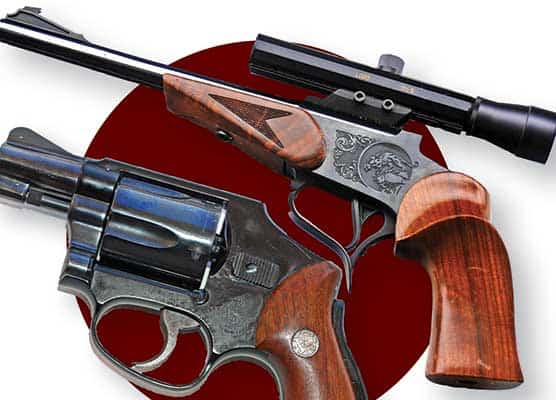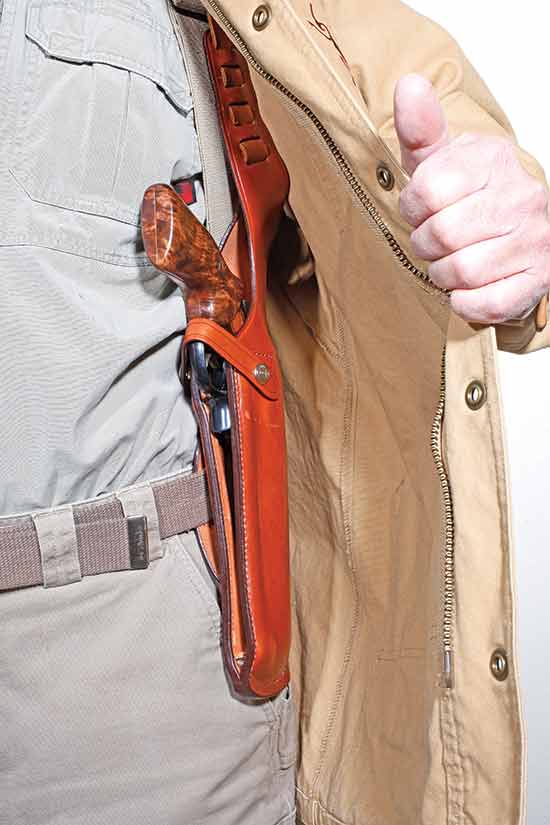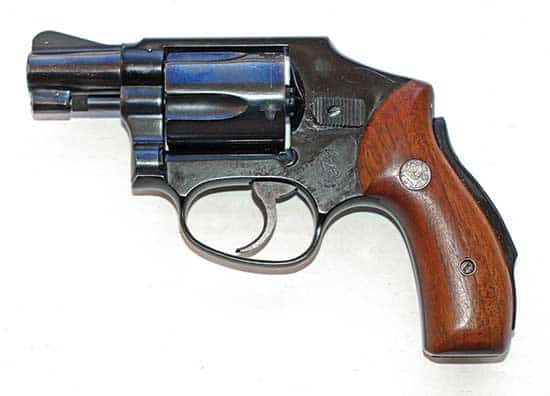The Good Old Days?
A Little Perspective, Please …
In 1968 pickings were slim for new handguns. In the “US Pistols And Revolvers 1967-68” section, Jay Charles and the Gun Digest technical staff wrote, “The conspicuous absence of many bright new handgun designs on this year’s horizon should make the task of writing up the few new additions considerably easier.” The situation was blamed in large part on the extreme anti-gun sentiment in America at that time resulting in the Gun Control Act of 1968 — which had a very chilling effect on the firearms industry and its then-perceived future.
According to that 1968 Gun Digest, the big news was the Thompson/Center Contender. It wasn’t the only single-shot pistol around (Remington’s XP-100 in .221 Fireball was available, as was the .22 rimfire Savage 101 about to be discontinued that year), but the T/C would truly catch on with 20th Century shooters and have some legs. First announced in 1967 at a price of $35 more than the $100 Remington, the versatility of the T/C’s then-$36 interchangeable barrels and calibers was its key selling point. Its superb accuracy became the second driver of Contender popularity.
In the September, 1967 issue of GUNS, editor Jerry Rakusan had sent field editor Col. Charles Askins, Jr. on a tour of the New England gun manufacturers. S&W VP of sales Fred Miller showed Charlie a prototype of a target model .45 auto, resembling a Model 52 target pistol on steroids. Alas, S&W would not introduce a .45 (a stainless double-action too), until much later. Colt’s big news was a commemorative edition of their Government Model.
Interestingly, Askins learned from S&W they were back-ordered by some 300,000 revolvers. Apparently, even then Draconian gun control in the wind caused gun people to “buy now, while they’re still legal.” Sound familiar?
A Change In The Wind
The Illinois State Police had just become the first agency to adopt a semi-auto pistol as standard issue in the S&W Model 39 9mm. Texas Rangers, and a few forward-thinking California police departments, had the Colt .45 1911, which was also popular as a second gun among Chicago cops. Nationwide, though, the standard was the Colt or S&W sixgun, normally in .38 Special, with some state troopers and rural lawmen using the .357 Magnum.
Among armed citizens, the sixgun was still the standard home-defense handgun, and the snubnose .38 Special the most common gun carried on a concealed weapon permit — again, usually a Smith or a Colt, though the lower-priced Charter Arms .38 Special Undercover introduced in 1964 was making inroads, underselling the S&W Chief Special by $6.50.
Many WWII and Korean War vets who had learned to trust the 1911 kept them at home and even carried them. They would soon be joined by a generation of Vietnam veterans, one of whom was cited in that ’68 Gun Digest as owing holster-maker John Bianchi his life. He had been able to clear his .45 auto from John’s superb X15 shoulder holster in time to outdraw and kill an enemy soldier about to shoot him.
Many folks swear by the X15 to this day, including me. By the way, in 1968 most states were “may issue” as far as carry permits, and in seven states there was no option for concealed carry at all. There weren’t any magazine limit laws, and a Colt AR-15 was less than $200.
Times Gone By
In 1968, you pretty much had to go to California and hook up with Jeff Cooper’s group if you wanted any serious “action” shooting with a handgun. Police had the PPC matches, but “civilians” were not allowed. The only game in town for the ordinary Joe or Jane was bull’s-eye pistol. In .22, the heavy hitters split between the S&W Model 41 and its brush-finished sister the Model 46, and High Standard’s top-line Supermatic series. A few 6” .38 Special target revolvers could still be found in Centerfire, but they were already swamped in a sea of S&W Model 52 .38 Special wadcutter autos and custom 1911s, the latter totally ruling the .45 class (as they still do). I was a college kid getting into bull’s-eye at that time, and about then my gun-hating mom bought the only firearm she ever purchased, a Christmas gift for me: a new High Standard Trophy Citation to replace my pre-WWII Colt Match Target .22 for $100.
The 1968 Gun Digest listed a new blue Colt Government Model at $94, a Colt Python at $140, a S&W Highway Patrolman .357 for $93 or the S&W Centennial Airweight .38 Special for $80. That single-shot Savage — styled to look like a “Peacemaker” — was $21.50, and a Standard Model Ruger .22 auto pistol had only recently gone up to $41.50 from its long-held introductory (1949) price of $37.50. You could buy .22 Long Rifle ammo for 75¢ a box, factory .38 wadcutters went for $5 per 50, and .45 ACP hardball for a couple bucks more.
Before anyone drools on this page, perspective is needed. In 1968 average American family income was reportedly around $8,600 and an average home price was roughly $25K. All things considered, things are better now for handgunners. As my friend and colleague John Taffin has said in the past in these pages, the Golden Age of Handguns seems to be today.







